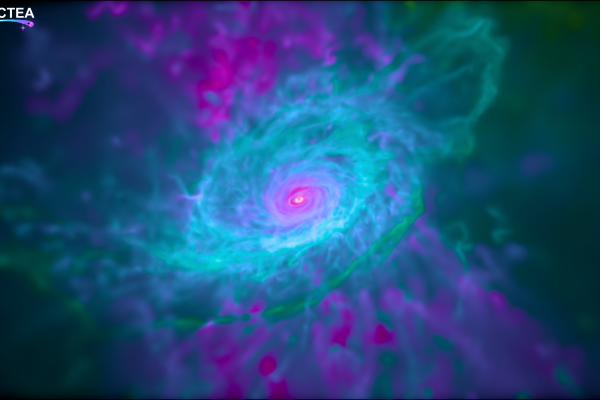The Department of Territory, Housing and Ecological Transition has published the first global map of light pollution in Catalonia, created using an advanced mathematical model that simulates the propagation of artificial light based on its physical characteristics at night and the composition of the atmosphere. The work, part of the 2024 night sky quality assessment campaign, has been carried out by the Institute of Space Studies of Catalonia (IEEC) using resources and data provided by the secretariat of Ecological Transition and with the support of the Institute of Cosmos Sciences of the University of Barcelona (ICCUB), using resources and data from the Department of Ecological Transition. It represents a significant step forward in evaluating and managing this type of environmental pollution, which negatively affects biodiversity, night sky quality, and human rest.
600,000 Computing Hours
The map covers the entire Catalan territory for the first time with a resolution of 1 km². It was generated using a high-precision scientific prediction model employed internationally. To calculate zenith sky brightness at over 32,000 points in Catalonia, three supercomputers were used, one from the Consortium of University Services of Catalonia (CSUC), totaling more than 600,000 computing hours.
The global map of night sky brightness is now publicly available on the Department’s website and is expected to be updated with more precise data in the coming months, as part of a project running through 2026.
The results show that the areas with the highest light pollution are concentrated along the Catalan coast, in major cities, and in industrial zones of Barcelona, Tarragona, Lleida, and Girona, as well as in some rural areas with high tourist activity, such as Cerdanya, La Seu d’Urgell, and the Val d’Aran. In contrast, interior and Pyrenean areas, especially zones specially protected against light pollution like Montsec or the Alt Pirineu and Aigüestortes i Estany de Sant Maurici Natural Parks, maintain excellent night sky quality with very low light pollution.
Over 1.56 Million Light Points
This new tool provides a more accurate spatial view of the current light pollution situation and, in the future, will help assess how night sky quality might evolve depending on changes in public lighting, new urban developments, or the implementation of specific ecosystem protection policies.
Unlike other approaches based solely on satellite imagery, this project also integrated the public inventory of outdoor lighting in Catalonia, developed by the Department of Ecological Transition. This allowed for a detailed evaluation of lighting effects across the territory, incorporating over 200,000 combinations of lamps and luminaires and more than 1.56 million light points.
Sensors Across the Territory
The map is complemented by real-time data from the Light Pollution Observation Network (XOCL), part of the ongoing night sky quality assessment campaign. For over a decade, this network has systematically collected data on night sky brightness from various locations, creating a continuous database essential for long-term analysis.
The network consists of fixed sensors distributed throughout the territory. These devices measure zenith sky brightness every few minutes and automatically send the data to a centralized management system for continuous, real-time analysis.
Preserving the Most Sensitive Areas
The map provides extensive insight into the state of the nocturnal natural environment and is available to nature conservation professionals, outdoor lighting designers, and the general public. It helps identify areas with the best night sky conditions for preservation and for enjoying amateur astronomy and stargazing—for example, during the popular Perseid meteor shower in mid-August.
The Department of Ecological Transition plans to invest over 9 million euros by 2028 in a project to reduce the environmental impact of outdoor lighting in natural areas especially sensitive to light pollution. This project is funded by the Climate Fund, which is supported by 50% of the revenue from the CO₂ emissions tax on vehicles and 20% from the environmental impact tax on installations. Current Actions Include:
- Implementation of the Action Plan for the Serra del Montsant Natural Park.
- Initial work to protect the Ports Natural Park.
- Public participation process to develop a plan to preserve and promote the Montsec night sky.
These actions are part of the European Nature Restoration Law, which requires measures to restore habitats to good environmental condition, including natural darkness and acoustic quality.



